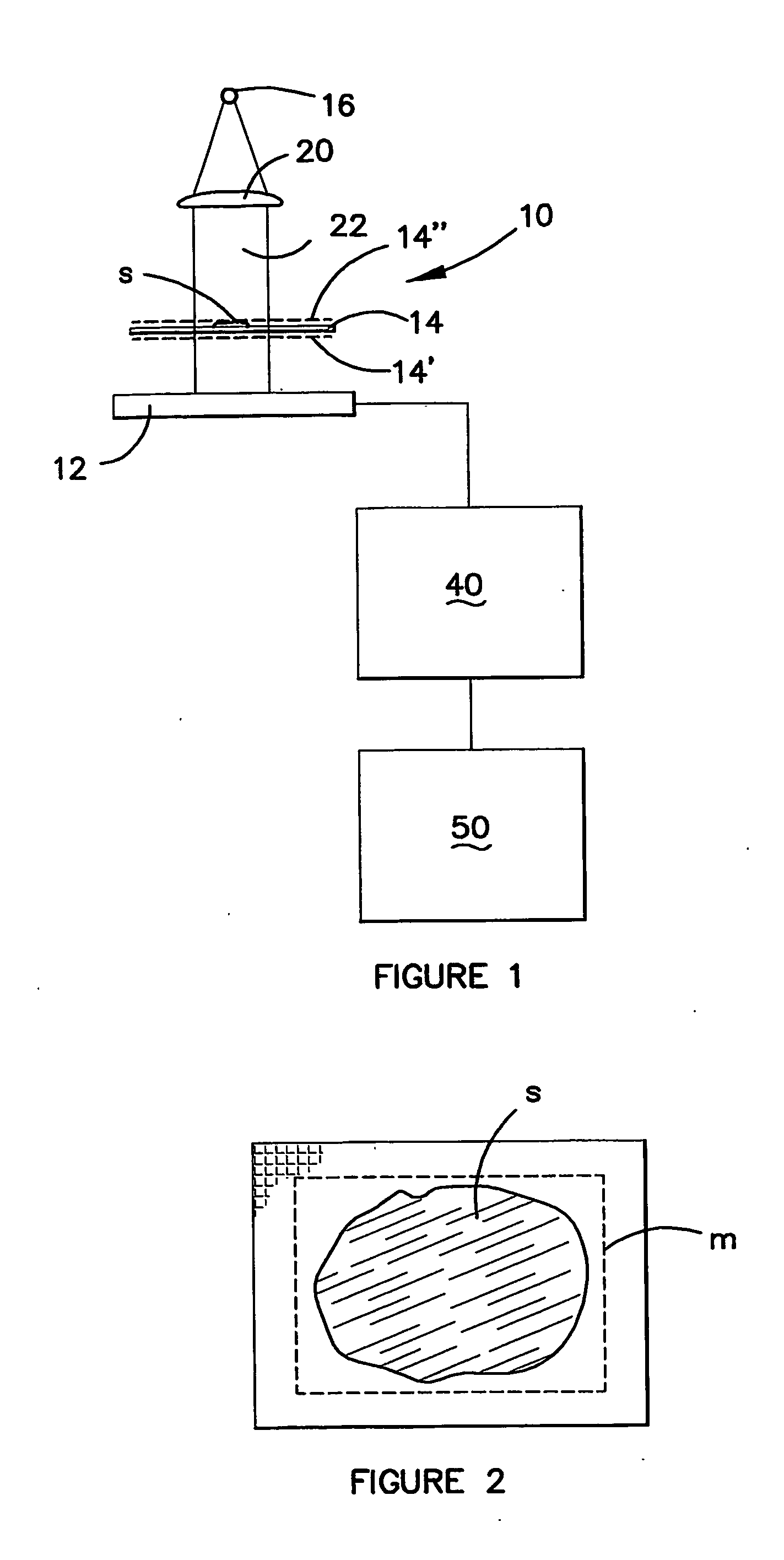Method and apparatus for determining the area or confluency of a sample
a technology of area or confluence and measurement method, which is applied in the field of measuring can solve the problems of difficult visualisation of living cells in culture, difficult to visualise viable cells, and difficult to measure the area or confluence of samples
- Summary
- Abstract
- Description
- Claims
- Application Information
AI Technical Summary
Benefits of technology
Problems solved by technology
Method used
Image
Examples
example 1
[0077] Bright field images were captured using a black and white 1300×1030 pixel Coolsnap FX CCD camera (Roper Scientific) mounted on a Zeiss Axiovert 100M inverted microscope utilising a Zeiss Plan-Neofluar (×10, 0.30 NA) objective. To ensure optimal specimen illumination, Köhler illumination conditions were established for each optical arrangement (condenser and objective alignment and condenser stop at 70% field width). In order to calculate the phase map, one in-focus, and equidistant positive and negative de-focus images were acquired, using a defocus distance of zz μm in this instance. This was achieved using a piezoelectric positioning device (PiFoc, Physik Instrumente, Karlsruhe, Germany) for objective translation. Bright field images were subsequently processed to generate phase maps using QPm software (v2.0 IATIA Ltd, Australia). The phase map generation, based on the set of three bright field images captured, involved software-automated calculation of the rate of change o...
PUM
 Login to View More
Login to View More Abstract
Description
Claims
Application Information
 Login to View More
Login to View More - R&D
- Intellectual Property
- Life Sciences
- Materials
- Tech Scout
- Unparalleled Data Quality
- Higher Quality Content
- 60% Fewer Hallucinations
Browse by: Latest US Patents, China's latest patents, Technical Efficacy Thesaurus, Application Domain, Technology Topic, Popular Technical Reports.
© 2025 PatSnap. All rights reserved.Legal|Privacy policy|Modern Slavery Act Transparency Statement|Sitemap|About US| Contact US: help@patsnap.com



